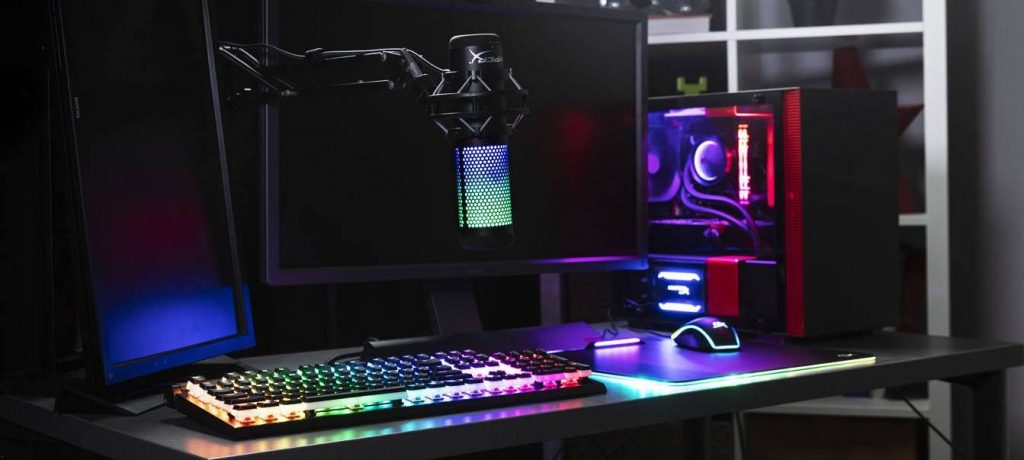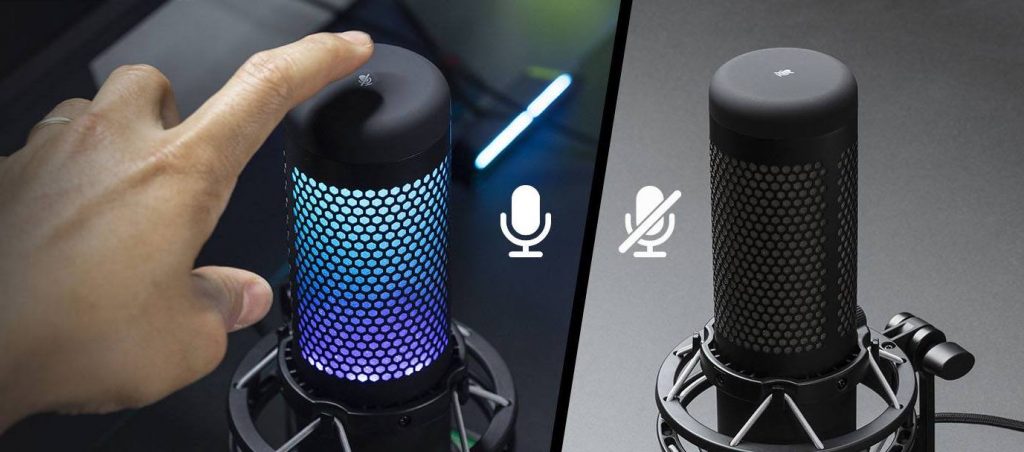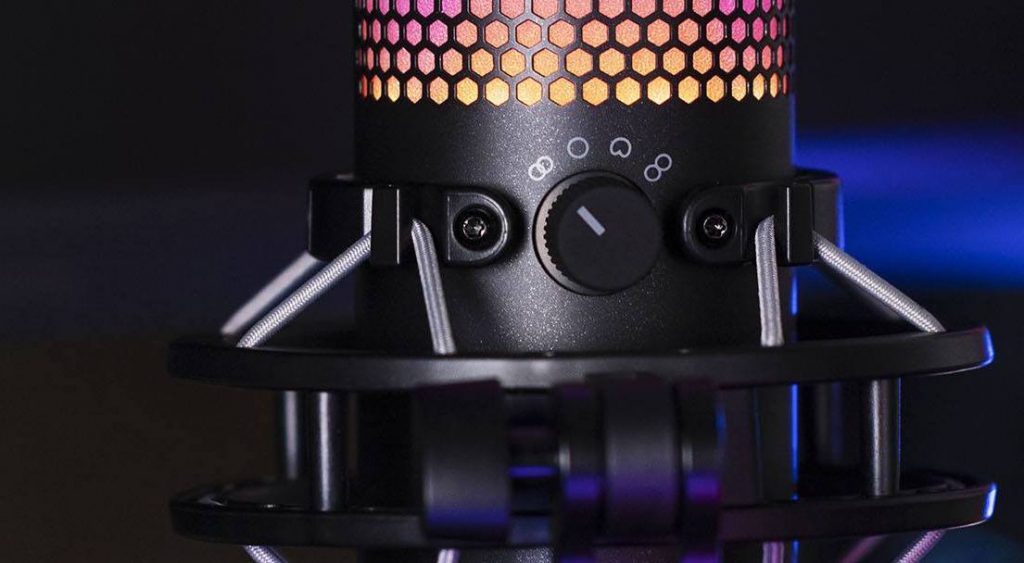The hardest part of releasing a new product is getting everything just right and standing out in the market. Even if research indicates this feature is important or you might want to do this, there is always going to be a minority or group of people that would like to see things change. This would certainly sum up the HyperX QuadCast microphone. Despite being a fantastic product, one that had a place in their lineup, there were some small quirks that were addressed. Given these small changes and a slightly higher price tag, is the HyperX QuadCast S a worthwhile improvement or are you better off sticking to the basic version?
Before even looking at the HyperX QuadCast S microphone, we’re greeted with a familiar package. For the most part, the packaging is the same, outside of the newer box being much smaller. The front shows the microphone, the back lists the core features in a bunch of languages, one side shows the microphone and the other lists key selling points. The only changes were removing the platforms supported, with Mumble also being removed from the supported app list, and the four polar patterns being listed, shown, and explained. This is actually a rather nice improvement, given you instantly know what this product can do and the best settings for each situation without reading the manual, asking someone, or doing research. The inside was also slightly changed. Instead of being a box with a Styrofoam casing around the QuadCast microphone, it’s a plastic holder that keeps everything in place.

At first glance, it’s hard to tell the QuadCast from the QuadCast S. Both come with a 6’ braided cord, an articulated microphone stand, mount adapters, built-in pop filter, and shock mount. They’re also the same size, shape, and style, with the biggest difference being color. Where the old version has red elastic bands, pop-filter and gave a rather apparent red glow, the QuadCast S uses a more greyish color band and pop-filter. This was done to bring out the biggest change, NGENUITY support.
With the QuadCast S, HyperX did a great job of addressing the original’s three greatest complaints. These include changing the color of the lights, allowing users to completely disable the lights and swapping mini-USB for USB-C. For the former two, you’ll need NGENUITY, HyperX’s software program that will allow you to add lighting effects, change the color, disable it completely and even mess with some of the microphone’s actual settings. Those interested will likely be delighted to know it has two lighting zones that you can control. Speaking for myself, I stuck with the usual rainbow cycle these products do so well, which unsurprisingly looks pretty and matches everything else I have.

Moving to USB-C was another solid choice. With more products moving to USB-C, it makes the QuadCast S easier to implement into my lifestyle. Now I can freely swap between that and my wireless charger, headphones, keyboard, or any number of other items. Even if you’ll most likely just use it on the microphone, something I ended up doing with the original, the option is certainly welcome.
Performance and set up is virtually identical to the original QuadCast. On top, there is a touch-sensitive mic mute button and a volume dial below. On the back, there is a port for power, optional headphones, and a dial for the aforementioned four polar patterns. These will determine what and where the QuadCast S is listening to, so you’re going to want to mess with that, positioning, and volume before getting ready to stream.
Performance remains pretty impressive. Most mics make me somewhat question how anyone listens to me, whereas QuadCast S makes things a lot clearer and easier to understand. Anyone looking to get into the streaming of video voiceovers will benefit greatly from a mic. The increased clarity, control, and versatility make it easier to interact with your audience, help people understand your video, or finally complete that raid in Destiny. And, given the versatility and built-in pop-filter, you have a good mic that you probably won’t need to replace unless you want to move to a more professional XLR set up, making it perfect for newcomers or more casual channels.

Perhaps the biggest advance to QuadCast S is timing. With COVID-19 changing so many different things, there is a lot more demand for microphones, webcams, and similar things. This is the perfect item to not only bring some fun to your day to day life that can also benefit you for the aforementioned things. In fact, the lights and overall control make it a more universal product, one that will probably attract a lot of people looking to have a more fun work set up or better enjoy school.
HyperX QuadCast S Verdict
Unsurprisingly, HyperX did a fantastic job with the QuadCast S. Instead of trying to reinvent the wheel, they kept it simple by just addressing concerns. With the ability to freely change the lights, disable them, and USB-C, the only reason to stick with the original is if you like the color scheme. For everyone else, it’s a fantastic microphone that adds a lot of fun to even the most mundane activity, making it easy to suggest for professionals, newcomers, or even students.
[Editor’s Note: HyperX QuadCast S was provided to us for review purposes.]

